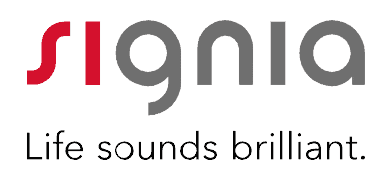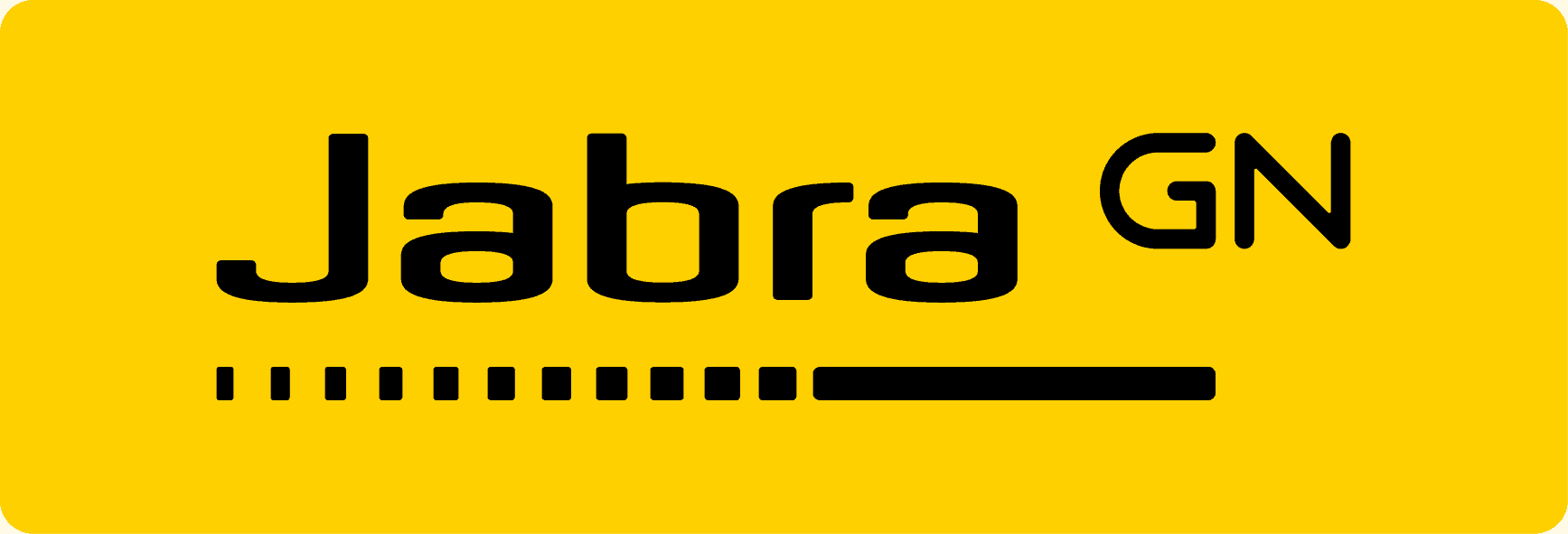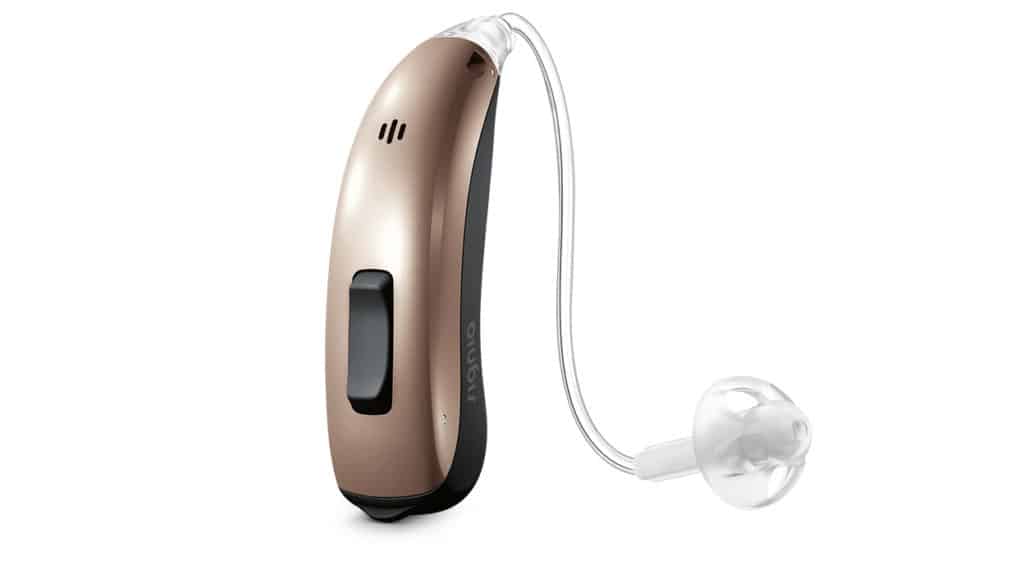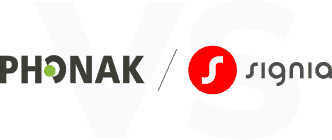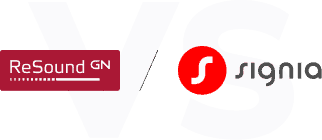Signia Hearing Aid Reviews
Signia offers a variety of hearing aid styles with advanced technology for all levels of hearing loss.
SeniorLiving.org is supported by commissions from providers listed on our site. Read our Editorial Guidelines
SeniorLiving.org is supported by commissions from providers listed on our site. Read our Editorial Guidelines
Signia offers one of the broadest ranges of products and price points. If you haven’t shopped for a new hearing aid in a while, and the name Signia is unfamiliar to you, here’s a quick summary to catch you up.
In 2013, Siemens hearing aids division was purchased and renamed Sivantos, and the hearing aids were rebranded as Signia.1 In 2019, Sivantos and Widex merged to form WS Audiology.2 This company offers hearing aids (Signia, Widex, Rexton, A&M), as well as several distribution networks (HearUSA, TruHearing in the US, and others worldwide).
In this year's review, I'll go through Signia's current portfolio, show you how their smartphone app works, review my experiences with Signia products from my clinical practice, and take a few of their hearing aids on a test drive.
How Does Signia Stack Up to Other Brands?
Signia hearing aids are durable, reliable, and are available in a variety of price points. Plus, Signia offers a lot of different products, giving you plenty of options when it’s time to invest in a hearing device. However, it’s always good to know what else is out there. If you aren’t sure about Signia or you want more budget-friendly options, be sure to check out some of the best providers that we have reviewed.
Broad Product Portfolio
One of the things I've always liked about Signia is that they offer my patients a wide range of products and price points. Signia not only keeps older legacy models available at a lower cost, but also has a network of dispensers all around the world. With very few exceptions, I’m able to provide my foreign patients with a list of certified Signia dispensers in their country should they need a warranty service.
Quick Tip: Visit our list of the best hearing aid providers in 2024 to see how Signia compares to other notable brands.
The Signia technology I tested for this review is the IX series, but the predecessor, NX, is still around and may be good for folks on a budget. The IX series is available in all form factors, including the Styletto super-slim RIC and a clever ready-fit completely-in-canal (CIC) model called Silk.
IX is shorthand for Signia’s Integrated Xperience with RealTime Conversation Enhancement Technology platform. Here’s how it works. Picture the way conversations take place in the real world, say, around a table in a noisy restaurant. People turn towards and away from each other based on the conversation’s flow. People also interrupt each other, or speak as they enter or exit the conversation’s sphere. One of the primary benefits of IX technology is its ability to help you follow group conversations in noisy places, even if motion is taking place. IX pinpoints and hones in on the speaker’s voice so you can easily hear them, even if they’re walking around or you’re turning your head. It’s designed with multi stream architecture that can even track multiple speakers simultaneously. The IX platform has been integrated into several Signia lines, including Styletto, Silk, Insio, and Pure Charge&Go.
Styletto IX
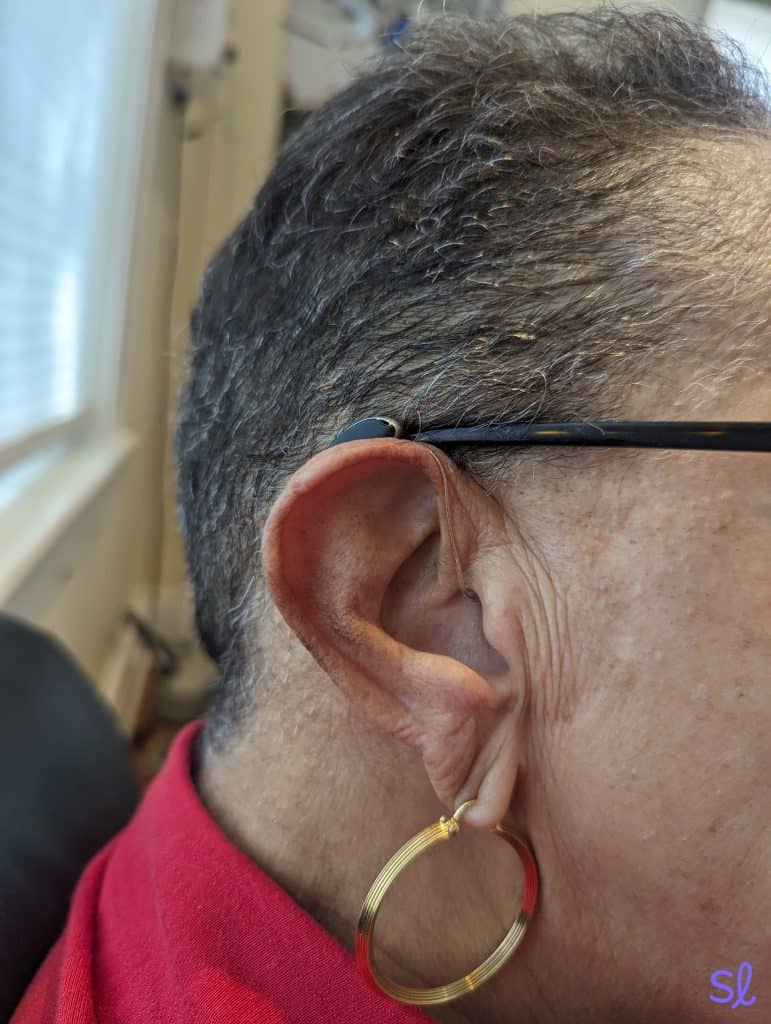
A patient wearing Signia Styletto hearing aids
The Styletto IX receiver-in-canal (RIC) hearing aid comes in a sleek, super-slim case. As the name suggests, it has a stylish, sophisticated look and appeal. Styletto IX takes up less space behind the ear than traditional RIC hearing aids, so it's comfortable and lightweight for all day wear. It’s rechargeable, comes with a wireless charging case, and holds a charge for up to 24 hours of regular use.
If you have an iPhone, you can use them for hands-free calling and Bluetooth streaming. Bluetooth is also available for Android.
Pure Charge&Go IX
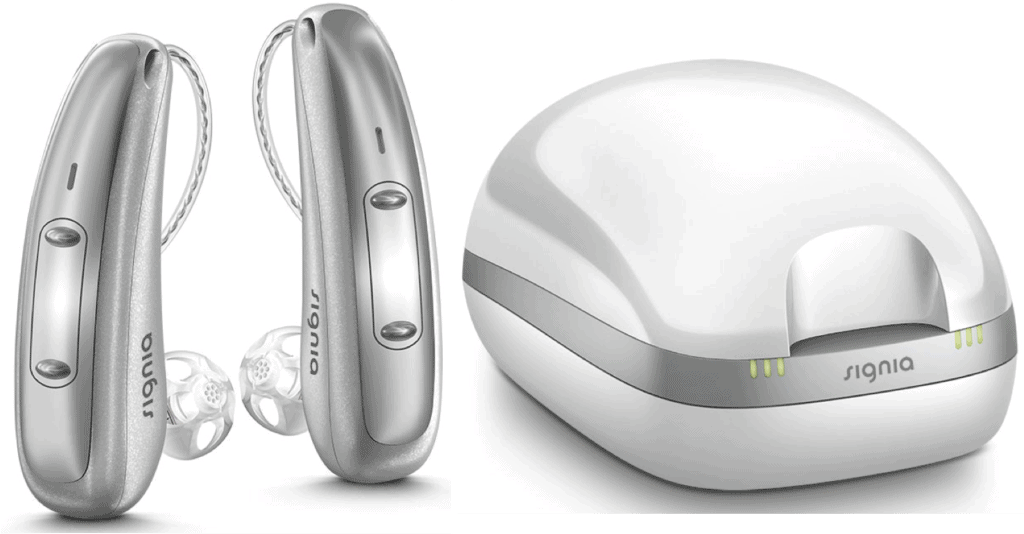
Pure Charge & Go RIC and Charger
Pure Charge&Go IX behind-the-ear (BTE) rechargeable hearing aids have a super secure fit that my patients like. Another plus is the option of adjusting these hearing aids through the Signia app, or by using tactile push buttons on the devices themselves.
In addition to IX technology, these hearing aids have Own Voice Processing technology that makes the sound of your own voice natural and comfortable to your ears.
Motion BTE Hearing Aid
Insio IX CIC/IIC
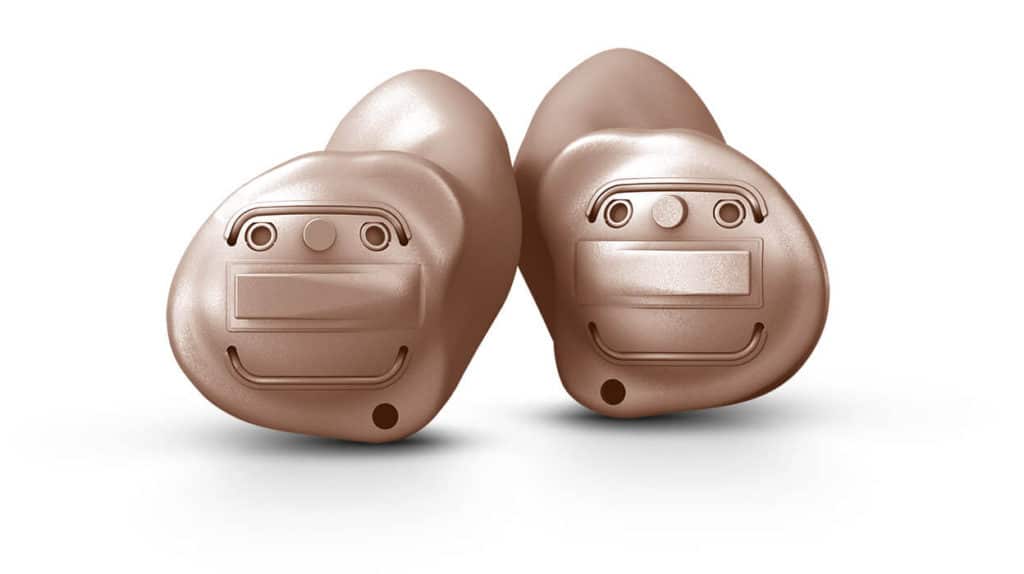
Insio Nx ITC/ICE
Signia’s ITE product line is called Insio. Insio IX hearing aids are small and discreet. I recommend these to my patients with mild to moderately severe hearing loss who want a nearly-invisible hearing aid. These hearing aids are available in completely-in-canal (CIC) and invisible-in-canal (IIC) styles.
Under the hood, they’re the same as the Pure and Styletto but in an “all-in-one” design. Aside from personal preference, I have found that for patients with dexterity or shoulder issues an ITE can often be easier to insert and remove. One caveat with ITE instruments. Those smaller than a “half shell” and some in-the-canal (ITC) models usually only have one microphone. This limits how well the hearing aid can reduce background noise.
Quick Tip: If you ever have trouble putting in your hearing aids, check out our guide on how to put in hearing aids.
Insio Nx IIC/CIC
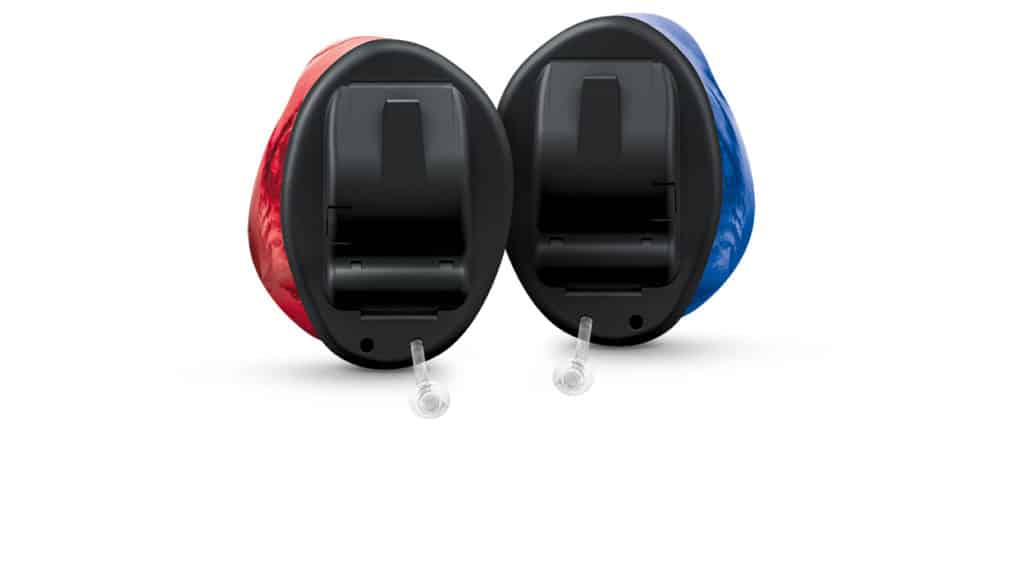
Insio Nx IIC/CIC
For those looking for a nearly invisible hearing solution, the CIC or invisible-in-canal (IIC) style may be a good option. While they only have one microphone, the deep position inside the ear canal allows for some natural directional benefit.
Products for Unique Needs
Signia makes a couple of products for a smaller subset of folks, but they are worth mentioning here.
CROS and BiCROS
The majority of people with hearing loss have an equal loss in both ears. However, some either have “single-sided deafness” or asymmetric loss such that one ear is too distorted to benefit from direct amplification. For these folks, Contralateral Routing Of Signal (CROS) or Bilateral CROS (BiCROS) can be helpful. In the case of true single-sided hearing loss, a microphone and wireless transmitter sits on the poorer side and sends sound to a receiver on the other side. If there is also hearing loss in the better ear, the receiver is also a hearing aid. The system looks just like two hearing aids. It doesn't provide true directional hearing, but it alleviates the logistical problems of not hearing on one side, like always needing to sit in a certain place or leaning toward speakers to hear better.
Silk Charge&Go IX
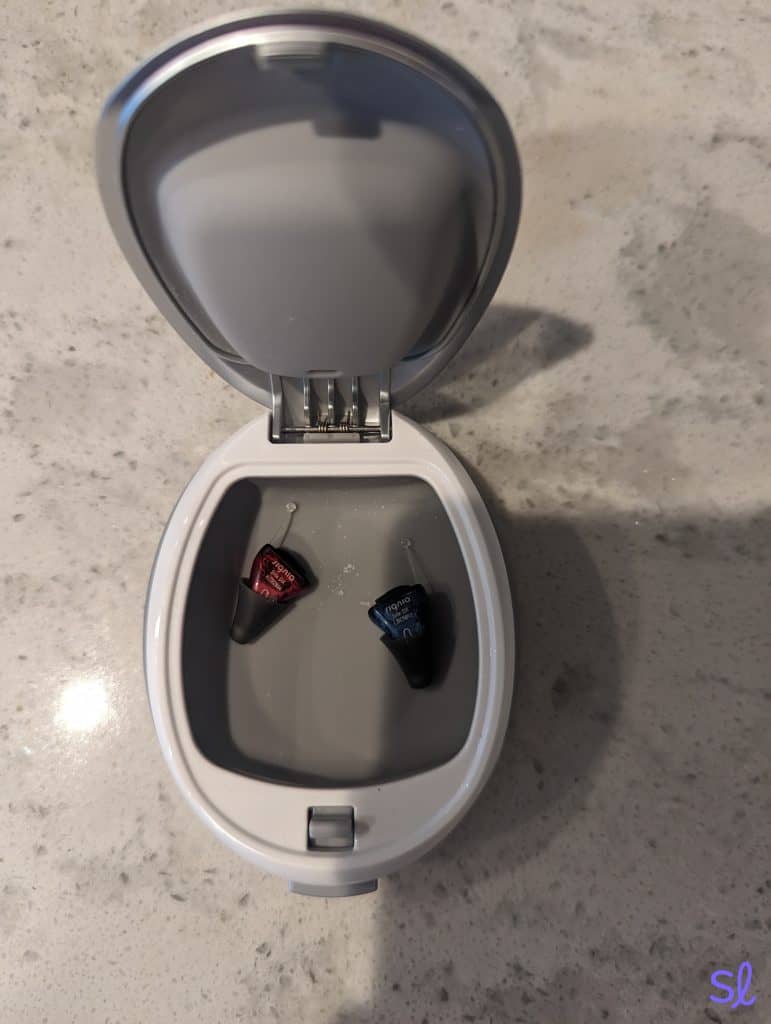
Trying out Signia's Silk hearing aids
Typical CIC instruments are custom made to fit your ear canal. This means you need to have an ear impression taken, which translates into a wait time of several weeks before your hearing aids are ready.
Using the same click sleeve system employed in their domes, Signia can provide CIC size and discretion for many people (depending on the size and shape of the ear canal) in an instant-fit form factor. That means you won’t have to wait the extra weeks to get your devices. These rechargeable hearing aids provide the same IX features as Insio. They’re adjustable through the Signia app.
While not for everyone, Silk Charge&Go IX can provide a good solution for people who want a CIC, but can't (or don't want to) wait once they decide to move forward with hearing improvement.
Signia Accessories
Like other major manufacturers, Signia recognizes that even the best hearing aids are susceptible to the negative effects of distance, reverberation, and background noise on speech understanding. To address this, they offer a series of accessories. The ones described below are all compatible with the IX line. Some may also work with older products. If you have an older Signia hearing aid and think some of these may be helpful, contact your hearing care professional and ask about compatibility or alternate versions for your devices.
StreamLine Mic
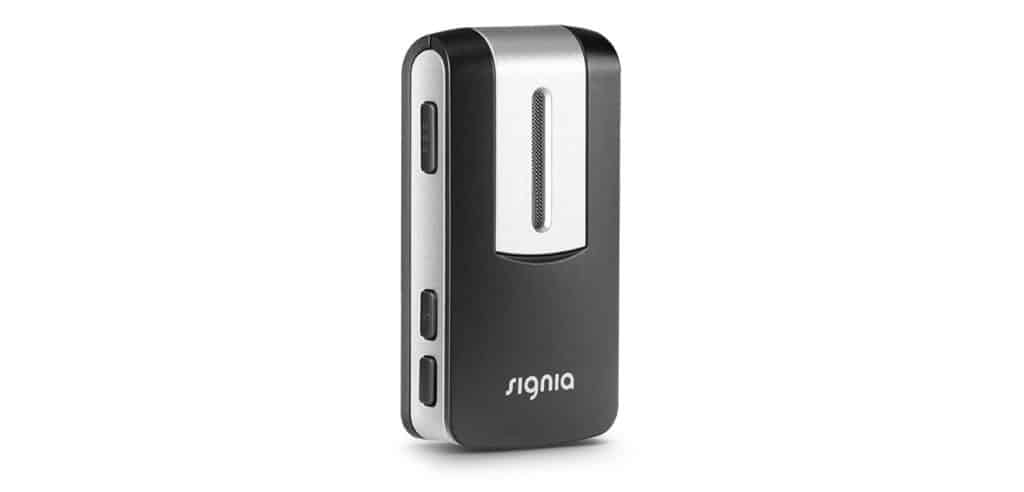
StreamLine Mic
Hearing aids work best when they are less than 12 feet from the sounds they are capturing. Beyond that, the quality of the signal is degraded significantly by reverberation and background noise. The StreamLine Mic is held or clipped very close to the mouth of the speaker. This captures the signal at an ideal “signal-to-noise ratio,” then beams it wirelessly to your hearing aids. The range is between 60 and 80 feet depending on the type of room you're in.
In addition, the StreamLine Mic can act as a Bluetooth re-broadcaster, allowing paired Bluetooth audio devices to stream to the hearing aids. I like both the flexibility of this device and the relatively low price. The operation takes a little getting used to, but the majority of the folks I've sold it to catch on within one office visit.
StreamLine TV
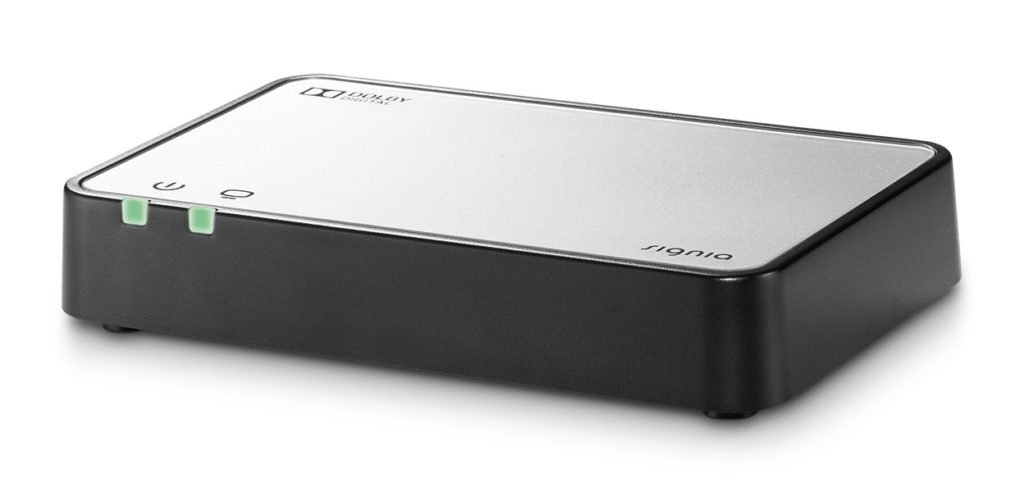
Streamline TV LED
Similar in concept to the StreamLine Mic, the StreamLine TV connects to your TV or cable box and streams the audio directly to your hearing aids. Because it uses an audio output, the TV speaker volume can be set to the comfort of those without hearing loss (or muted for private listening), and the hearing aids can be adjusted to your needs.
Set up is simple and once connected, it is pretty much hands-off.
Remote controls
Hearing aids today, including Signia models, are designed to operate automatically. However, as Finley Peter Dunne implied when he said “Trust everyone, but cut the cards,”3 having a manual override is always a good idea. The majority of Signia products have on-board controls, but those buttons are pretty small. Remote controls not only offer sausage-fingered folks like me a way to adjust volume and programs, but they allow caregiver access to hearing aids for patients who may need additional assistance, particularly those with dexterity or memory issues. Signa offers both standalone remotes and smartphone applications for this purpose. This review will cover only the current version of each. Other, older versions may be an option and should be discussed with your hearing care professional.
miniPocket Remote Control
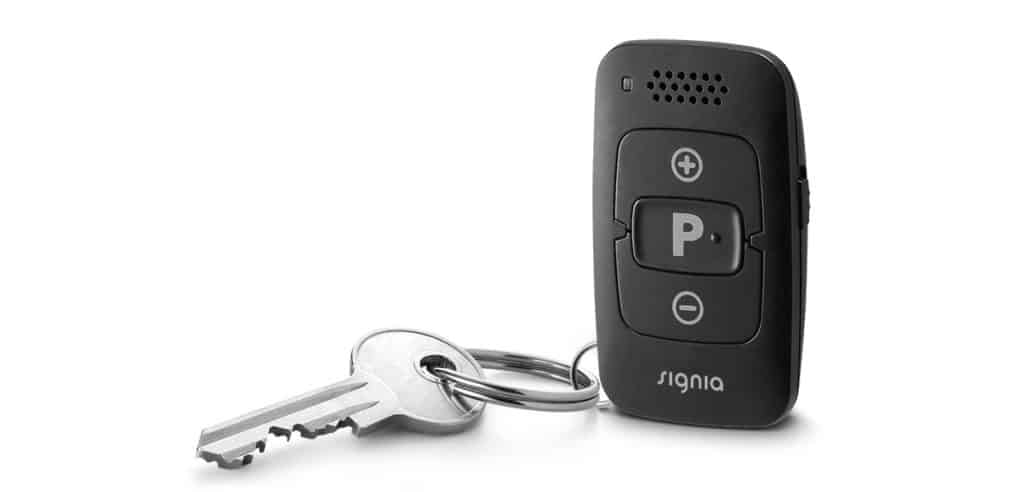
miniPocket Remote Control
The mini pocket control is very basic. It allows you to control volume and toggle between programs. I find these remotes to be a good match to folks who prefer their hearing aids to be automatic, but occasionally need minor adjustments or a specific manual program such as a telecoil program for a hearing loop at church.
Signia App
Recently, Signia combined several of their smartphone applications into a “master” app simply called the Signia App.
In addition to serving as a remote control, it allows for quite a bit of fine-tuning, information about the hearing aids, Care Chat with your hearing care professional, and the 24/7 Signia Assistant feature. It also contains a WellBeing feature, which tracks your steps, standing time, social interactions, and hearing aid usage time.
Basic Remote Control
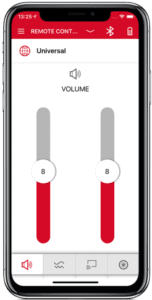
Volume Control
The app provides a hearing program and volume control, as well as sound-balance adjustment and battery-level monitoring.
Directional Hearing
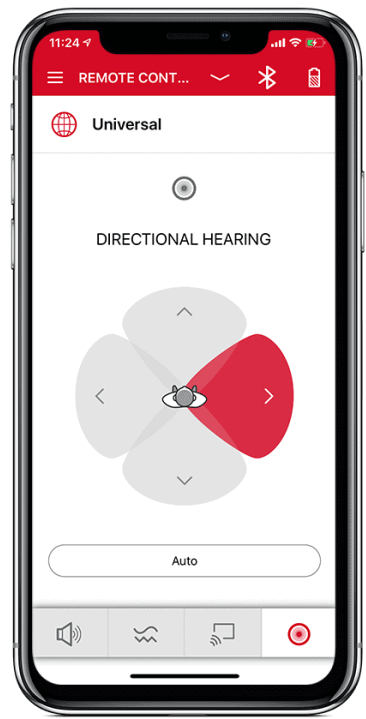
Directional Hearing
In this view, the user can fine-tune the behavior of the directional microphone. It’s often used in the car to allow the driver to hear the front-seat passenger while reducing road noise.
Connectivity and Streaming
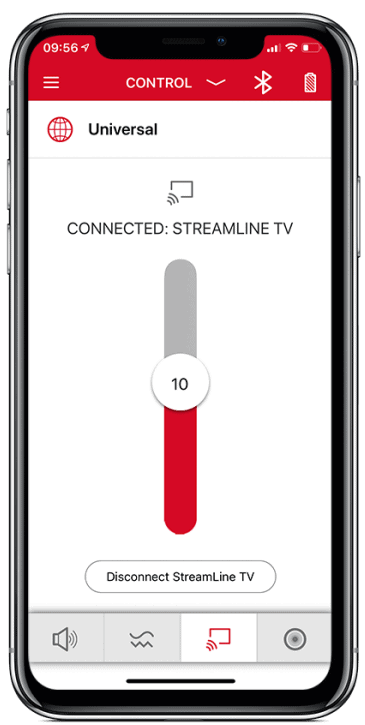
Accessory control
When the StreamLine TV icon is selected on the lower ribbon, this slider changes the volume of the TV signal. This only affects the streaming volume, not the TV speakers. You can also use this feature to adjust the StreamLine Mic volume.
24/7 Signia Assistant
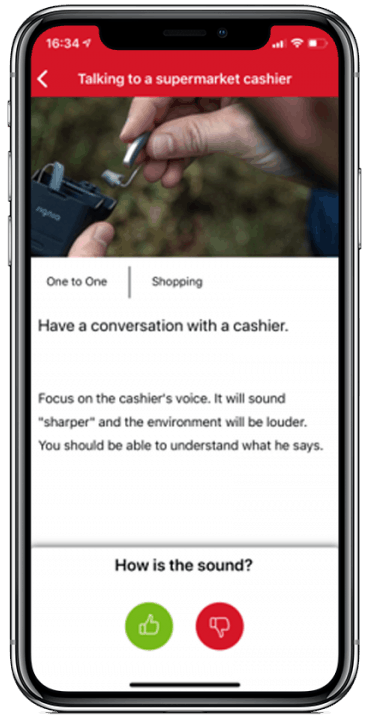
In-App Assistant
The 24/7 Signia Assistant is powered by artificial intelligence (AI). It helps you optimize sound quality and the sound of your own voice, and offers other features like handling noise and conversations.
Care Chat
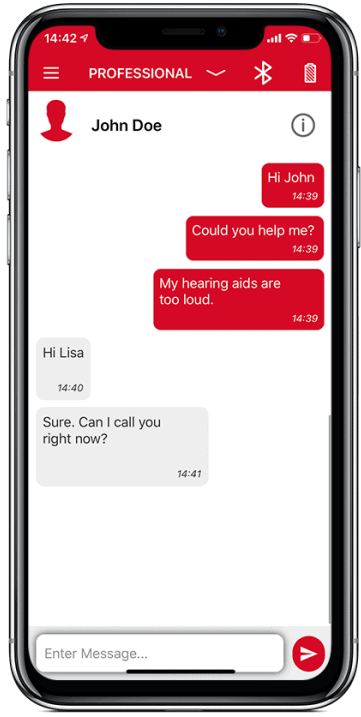
TeleCare Chat
If you get stuck, you can reach out to your hearing care professional for support via text, video, or phone call.
Need Help Finding the Right Hearing Aid?
Answer a few easy questions to find the hearing aid that’s right for you.
Customer Service
I've always found Signia customer care to be very good. For dispensers, they offer phone support, online resources, and both in-person and online training. For end-users, they have a wide range of text and video-based resources on their website. I like how they opted for text-based instructions rather than narration with captions. This “open captioned” approach doesn't require the viewer to enable captions. As a musician, I appreciate the groovy music these videos have in the background.
Compare Signia to Other Providers
My Experience With Signia
Since before I started my clinical practice in 1992, I was actively involved in the signing Deaf community. As such, I became familiar with very powerful hearing aids we affectionately called “boomers.” One of the most common was the Siemens 284PP, a predecessor to the current Signia hearing aids. A unique feature of this vintage of Siemens hearing aids was that they had sterling silver battery contacts, so we needed to keep toothpaste and cotton swabs in the lab to clean (de-tarnish) them. Fast forward to today, and I still prescribe Signia hearing aids to my patients.
Summary
Overall, I am as happy with the current offerings from Signia as I was with that old boomer in 1992. The folks at Signia are continuing the long tradition that began at Siemens for producing solid products with effective hearing technology inside. Their lithium ion technology is just as good, if not better, than the competition and their utilization of 2.4 GHz wireless tech rounds out the product line beyond the ideal listening environment. Finally, their ability to stream to mobile devices makes them convenient for use in our tech-driven world.
Below are my ratings for different aspects of Signia’s hearing aids out of five stars:
- Variety of styles: 5
- Tinnitus features: 5
- Mobile app experience: 4
- Technology: 5
- Accessories: 5
- Affordability: 3.5
Take Our Free Online Hearing Test
Wondering if you have hearing loss?
Grab your headphones and get an evaluation in minutes.
Wikipedia. (2020). Siemens Hearing Instruments.
WS Audiology. (2020). About Us.
GoodReads. (2020). Finley Peter Dunne Quotes.
